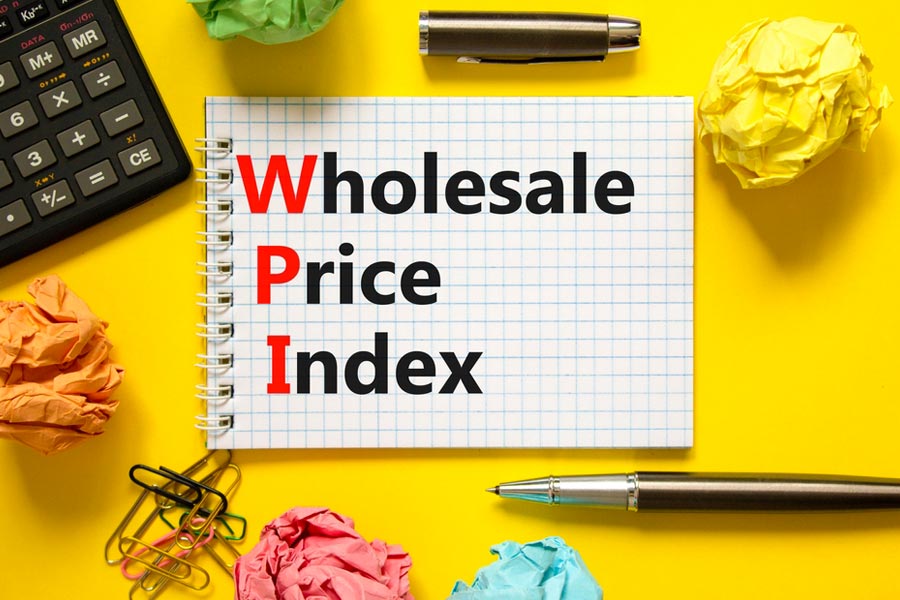Inflation calculated on the basis of the wholesale price index (WPI) turned negative for the first time since July 2020, a downswing triggered by a sharp decline in inflation across products.
WPI inflation declined to a 34-month low by 0.92 per cent in April compared with a 1.34 per cent rise in March, according to data released on Monday by the commerce ministry.
The Bloomberg consensus estimate was a decline by 0.4 per cent — so the fall is actually steeper than what the economists were anticipating.
Last week, CPI inflation tumbled to 4.7 per cent; with both inflation gauges sinking in April, the likelihood of an extended pause in monetary policy rates has firmed up at a time advanced economies are still struggling to douse inflationary fires.
Inflation in manufactured products — the highest weighted component in the index at 64.23 — fell by 2.42 per cent compared with a decline of 0.77 per cent in March.
Primary article inflation rose 1.6 per cent versus 2.4 per cent in March
“We expect WPI inflation to continue to moderate as easing commodity prices drive input costs lower,” Barclays India said in a note soon after the inflation number was released.
Meanwhile, economists are already talking about retail inflation in India cooling to the RBI’s comfort level of 4 per cent by May.
“Our analysis places May CPI inflation tracking around 4 per cent, which suggests the Q2 (April-June) average is likely to undershoot the RBI’s forecast of 5.1 per cent by as much as 60 basis points,” Nomura economists Sonal Varma and Aurodeep Nandi wrote in a note.
Tanvi Gupta Jain, economist, UBS Securities, said: “We expect headline CPI inflation to remain range-bound at 4.7 per cent to 5 per cent in May-June and average 5.3 per cent in 2023-24 against 6.7 per cent in the last fiscal.”
Jain said the moderation in prices is partly on account of slowing domestic demand and correction in global commodity prices as well as the base effect.
“Weather-related disruptions (El Nino) continue to pose upside risks to our forecasts. We continue to maintain our base case view that MPC will prefer to go for a prolonged pause in the June policy review before cutting repo rate by 50bps in the second half of the fiscal, particularly if the Fed pivots.”
In the food articles category, prices of cereals, wheat, fruits, milk and egg, meat and fish declined over the previous month.
Inflation in vegetables was (-) 1.50 per cent, potato (-) 18.66 per cent, onion (-) 18.41 per cent and wheat was at 7.27 per cent in April.
Fuel and power basket inflation eased to 0.93 per cent from 8.96 per cent in March. In manufactured products, inflation was (-) 2.42 per cent against 0.77 per cent in March.
“If inflation continues to creep lower over the coming months as we expect, the RBI could even be laying the groundwork for rate cutsby the end of the year,” Thamashi de Silva, assistant India economist, CapitalEconomics said.










